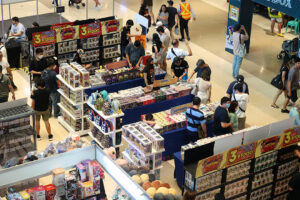THE BANGKO SENTRAL NG Pilipinas (BSP) may need to keep rates higher for longer or even hike rates further to cool inflation, HSBC said.
This as it sees private consumption staying strong and spending patterns shifting as the Philippines inches closer to becoming an upper middle-income economy.
In a report, HSBC economist for ASEAN (Association of Southeast Asian Nations) Aris D. Dacanay said that monetary policy reins may need to be “tighter than before” in order to keep inflation within the 2-4% target band.
“With Filipino consumers changing, so, too, should inflation and monetary policy. We can expect core consumer price index (CPI) to be stickier as consumers become wealthier and allocate more of their budgets to services and less to staples,” he said.
“Policy makers would then need to tighten the monetary reins even further if inflation were to surge in the future, supporting our view that, when the dust settles, monetary policy in the Philippines will likely be higher for longer,” he added.
The Monetary Board earlier this month kept its benchmark rate at a 17-year high of 6.5% for a fifth straight meeting.
BSP Governor Eli M. Remolona, Jr. earlier said that it was “highly unlikely” for the central bank to deliver further rate hikes. Instead, he signaled the possibility of a rate cut as early as August.
While high inflation and interest rates have dampened household consumption, HSBC said the Philippines still remains to be “one of the strongest in ASEAN.”
“But, despite household budgets getting tighter, consumers are, interestingly, reallocating their spending from ‘essentials’ — such as food and clothing — to restaurants and other miscellaneous goods services, even as prices have climbed. It’s a bit of a paradox,” Mr. Dacanay said.
Despite a “squeeze in purchasing power,” HSBC said Filipino consumers are spending more on nonessential products such as skincare, sports and takeout meals.
“This is a testament that tastes and preferences change, more so with the Philippines being inches away from becoming an ‘upper middle-income’ economy.”
The government is targeting to achieve upper middle-income status by 2025. An upper middle-income country has a gross national income (GNI) per capita between $4,466 and $13,845.
At present, the Philippines is classified as a lower middle-income country with a GNI per capita of $3,950.
“All things considered, the slowdown in household consumption is likely temporary as Filipino households adjust their spending given how much inflation soared last year,” HSBC said.
Household spending, which accounts for more than three-fourths of economic growth, rose by 4.6% in the first quarter, the slowest since 2010.
“When inflation stabilizes, consumption should broadly pick up. But, when it does, demand for nonessentials will likely grow faster than essentials — a trend apt for a country that is inches away from becoming an ‘upper-middle income’ economy,” it added.
Headline inflation accelerated for a third straight month to 3.8% in April, bringing the four-month inflation average to 3.4%. The BSP sees full-year inflation at 3.5%. — Luisa Maria Jacinta C. Jocson
